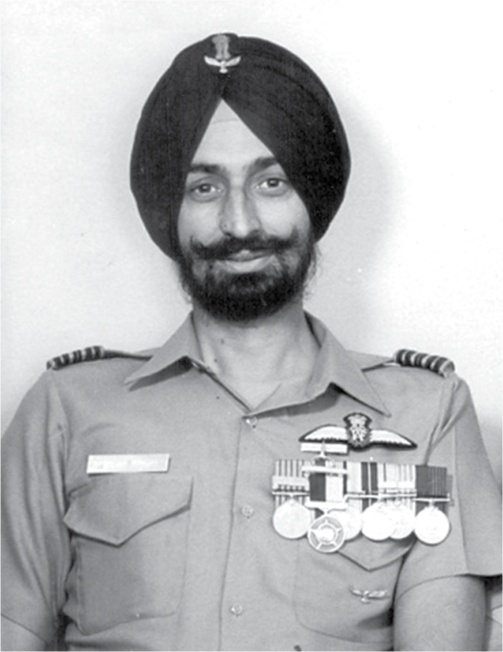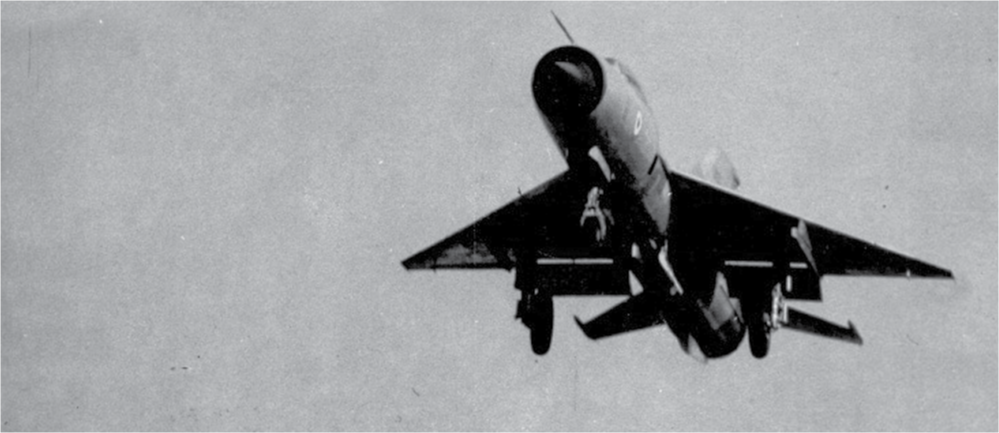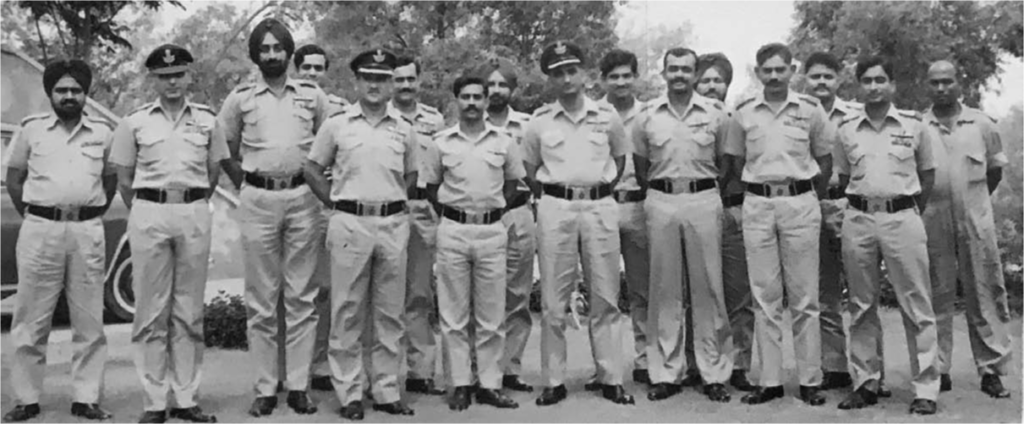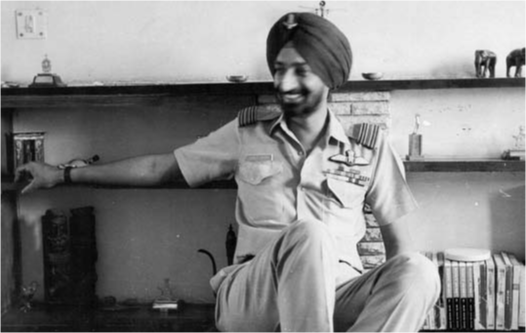Memories Of My Time With The Golden Arrows: A Tribute To Late Air Cmde Jasjit Singh AVSM, VRC, VM


The much-publicized arrival of the Rafales in an arrow formation on July 29, 2020 at Ambala as the initial lot of 17 squadron, “The Golden Arrows”, brought back a flood of wonderful memories of my association with this Squadron. While I was in Hasimara in 37 Squadron for four years from 1968-1972, 17 squadron was our sister squadron. Those memorable days of camaraderie and fun, including fighting the 1971 war, together are still fresh in my mind but would form part of another write-up on Hasimara and 37 Squadron.
I had just finished a year as an instructor in the Air Force Academy, Dindigul in July 1975 when my posting to 17 Squadron on MiG-21s came. Initially, I was reluctant since I was working on my A-2 category and needed just six more months to collect the 300 instructional hours and appear for the categorization. However, Air Commodore “Baba” Katre, the Commandant, advised me to go convert on the MiG-21s, the mainstay of the IAF at that time, and worry about A-2 Cat on MiG-21s later with a number of convincing reasons. Following his counsel, we packed our bags and moved to Halwara. From Delhi, I drove up alone in my faithful Ambassador, MPO 1455, since we were told that there was no married accommodation and the Station Commander, Gp Capt Maan Singh, did not permit ladies in BOQs. My wife, Malini was a little upset since we had been married in late November 1974 and didn’t like the idea of staying back. However, she accepted reality and stayed back with my brother in Delhi till I organized some accommodation in Halwara.

I drove in on August 17, 1975 with next day being a Monday and my reporting date. Fortunately, there were some friends from Hasimara still in the squadron and I washed up and got to the bar in time to celebrate the reunion. As it happened, the CO of 17 Squadron, Wg Cdr Jasjit Singh, walked in to the bar a little later. Bonny Mukherjee, who was with me at that time, immediately introduced me to the CO as an old friend from Hasimara days. Jasjit Sir shook my hand but gave me a look and said, in his typical laconic way, that there was no hurry and I should first find a barber before I came to the squadron. My brother Sonny, from the 85 th pilots’ course, had already told me a bit about Jasjit Sir including that he was his instructor in the basic stage, was a thorough professional and a good flier but demanding of his pupils so this didn’t come as too much of a surprise.
I hunted down the barber early next morning and charged to the squadron just as they were all coming in from the met briefing. Flt Lt AL “Oscar” Deoskar, the Adjutant of the squadron, gave a funny look at my short hair, having met me in Srinagar in May 1972 with long hair, and ushered an almost bald Harish, but impeccably dressed with a peak cap and logbooks in hand as was customary, in to the CO’s office. Jasjit gave me a cup of tea but refused to look at my logbooks. He didn’t say much but did explode a bomb under my chair by saying that he didn’t want me in the squadron without stating why. I sat there dumbfounded for a moment or two and then told Jasjit Sir, “Well, Sir, you were in P Staff till recently, know most people there, why didn’t you get the posting cancelled. You could’ve saved us both some time and effort?” or words to that effect.

Our first meeting ended on that not so pleasant note. Before my MCF on type in Adampur and later, while I was waiting to start flying, I would be sitting in the crew room sipping endless cups of tea/coffee and reading aviation magazines or Russian manuals on the MiG-21, Jasjit would come to the crew room after his flying to have his regular post-flight cup of coffee or breakfast. As soon as he entered, almost everyone would disappear on one pretext or the other and Jasjit would just sit there, watching me I felt. Later, my friends told me that if you hang around the crew room, Jasjit would find some job for you. So, to avoid being loaded with secondary duties/jobs, they used to do the disappearing act. Personally, I had no qualms on this issue so, most times, Jasjit and I would be the only two in the crew room without much conversation. I soon realized that Jasjit had an uncanny ability to judge a person’s abilities and talents through observation and would find the right jobs for them for the betterment of the Squadron. So, if Bonny had the gift of the gab, he was the regular MC for all our parties and also i/c Squadron Diary. If RS Pannu had green fingers, he was i/c Garden and, by far, our squadron garden was the best on the station despite the squadron having come up in a desolate area across the runway. If my course mate, BS “Genda” Grewal was from a farming community, he was out planting trees all across the station and a bit of farming in the clear areas. “Oscar”, being the meticulous bookkeeper, studying for staff college entrance exam was the natural adjutant and ran the squadron well. Soon thereafter, Jasjit nominated me to assist the Flight Commander, MV Singh, in flying training and also to do the PAI’s job and assess all attack films and armament scores.

Photo in mid-1976 when Gp Capt Maan Singh handed over command of AFS Halwara to Gp Capt Prithi Singh. In the front row, second from left is Wg Cdr Janak Kapur, the O/i C Flying, then Jasjit Singh, Maan Singh, Gp Capt Prithi Singh, Flt Lt Radhakrishnan, Sqn Ldr Pingali, Flt Lt SK ‘Hag’ Sharma. At the back, just behind Jasjit Singh is the author Flt Lt Harish Masand.
At the same time, Jasjit loved to challenge and goad the younger lot to do better. Towards this, as soon as I started my air to ground phase in the ops syllabus, he would lay a wager, with a chuckle, on the scores of that sortie for a bottle of beer. While I lost a few in the initial days, there was nothing sweeter than a beer won from him later. I also realized that actually Jasjit also welcomed challenges and questions from his subordinates. While most people never questioned the CO’s brief, I found myself raising my hand and questioning what he had said on many issues but that never ruffled Jasjit Sir because he loved a good argument. MV and Oscar regularly advised me not to question the CO for my own future but I had become a little hard of hearing by then, perhaps with all the jet noise. However, much later, I found out that Jasjit actually appreciated when the subordinates spoke up, better with facts, and indirectly tried to inculcate such independent thinking and speaking up for what one believed in. I am not going in to specific instances here because that would make for a small book but I’d end later with how I found out, and survived despite questioning him and other seniors on the station on many occasions.
In the middle of my ops training on type, while we were on detachment at Suratgarh in February 1976, I was detailed for a 10 week Photo Interpreters Course in Poona and asked to move at short notice. Since this would have meant a break in flying and ops syllabus as also the fact that I was unlikely to ever be used as a PI unless I became medically unfit, I strongly represented against the course and requested Jasjit to get it cancelled with his P Staff connections. Jasjit just smiled and said he had already tried but with my FR experience on Hunters during 1971 war and engineering background, P Staff were adamant. In Intelligence school in Poona, I pretended that I couldn’t see the stereo image on the PI’s bifocals for the first week when the instructor, Flt Lt Colville D’Souza who had become very friendly by then, told me he had no option but take me to the CO, Wg Cdr Agarkar. The CO asked me to tell him honestly what the problem was. I told him I didn’t want to do the course. He then asked which squadron I had come from and why the CO of the squadron hadn’t been able to get my name off from the course. The moment he heard it was Jasjit, he almost jumped and said if Jasjit couldn’t get it done, no one could so I might as well enjoy Poona for 10 weeks whether I could see the images or not. That is the kind of esteem Jasjit was held in even outside the pilot community.

Mid-Septeber 1976, I finished my ops syllabus by day and was declared Ops Day. In October, my posting came to 101 Squadron in Adampur that had been designated as the training squadron. Despite my impending move, Jasjit got me my trainer captaincy and night qualification. Just before leaving the squadron, he finally told me why he didn’t want me in the squadron. He said he knew that as soon as I became operational, I would be moved to some other squadron and 17 would not get any benefit of having trained me. That’s why he had said he didn’t want me in the squadron. Fortunately for me, I went back to Halwara a couple of times for RSO duties at SK Range and called on the Jasjits many time, the reward being a good drink and some good “gyan”. It was in one of those visits in Halwara when I told him that I was trying to question the seniors less these days, he looked at me with a smile and said I would wither and fade away the day I stopped standing up for what was right. I now realize he was absolutely right.
Even after he moved to IDSA in Delhi and I moved on in life, I kept calling on him and spending some very educative evenings with him where he discussed topics like air power, modernization of the Air Force and affordable defence as well as nuclear issues. His vision and writings on such matters are well known to the entire strategic community in India, and even abroad, and I benefited immeasurably by hearing it first hand. The reward now was always an annotated copy of his latest book or paper. The next time I met him, we would sit and discuss what he had given me. When I was posted to Delhi in 1993 and working on the MiG-21 Bis Upgrade Program, we got even more opportunities to share a drink and some thoughts. Needless to reiterate, through all these interactions, I learned a lot from Jasjit and could never repay all that he gave me despite not wanting me in the squadron at first.
Fortunately, I got the opportunity to repay a small part of this debt to the Squadron and Jasjit Sir before I left. I got my Ops Day on September 15. Less than a week later, DASI came visiting essentially for a check on the senior leadership and Flight Commanders. Jasjit put me in almost every sortie that he could. When the Director, Gp Capt Mally Wollen, asked him why, Jasjit just said Harish is the latest Day Ops pilot and he wanted to show DASI how the Golden Arrows leadership trained its youngsters. Jasjit himself was extremely good at low-level navigation and I was put as his wingman in a 4 aircraft LL live strike on SK range with one 57mm Rocket. Halfway through the navigation, the inspector, Wg Cdr Ben Brar declared himself hostile. I spotted him comfortably and ordered a hard turn as had been briefed. A little more than ninety degrees in the turn, Ben called off the attack and declared himself as friendly. We reversed and Jasjit just called out a slight speed increase and steered a few degrees off the calculated course for a while. At pull up point, we were right on time and track and everyone got some good results. Ben Sir, in the debrief, complimented Jasjit on the mission but said with a smile that we hadn’t synchronized the compass after the tactical action and so could have gone off-track hinting that the mission success after the bounce was a fluke. I immediately went and got the Russian navigation booklet on the MiG-21 that clearly stated that the KCI-6 was a pure gyro, unlike a magnetic-gyro like the G4-F compass on the Hunter, and was not to be slaved in flight. Ben Sir was magnanimous enough to say that he had thousands of hours on type but didn’t know this. Another one was when Mally Sir was claiming a kill in group combat before one of the defenders got on to him, without a film and without using the gyro sight and I had to mathematically prove that he required almost three times the lead that he applied on the fixed sight at the range and speeds we were at. Again, Mally Sir complimented Jasjit on the way the Squadron was trained. Jasjit Sir told me later I had paid the Guru-Dakshina in full but I know I still owe him a lot more.
On a lighter note, in late 1987 while I was commanding 28 squadron on MiG- 29s, Ajay Jasjit Singh came and joined the squadron as a young Flight Lieutenant from 45 Sqn in Naliya. Instead of telling Ajay, whom I had known as a boy from Halwara days, that I didn’t want him in the squadron, I told him that I would treat him exactly like his father had treated me in 17 Sqn. Knowing his father well, Ajay got visibly perplexed, as I had been more thatn 12 years earlier, till I couldn’t carry on with the joke and assured him that that meant very well and I would teach him as much as I could, like his father had. As a matter of fact, I thought Ajay would do well to take on the low level aerobatics on MiG-29s after Ramesh Goyal and I left in June 1989 but he was considered too young by the C-in-C who said it would be considered later. Unfortunately, Ajay had to leave fighters a few years later because of serious injuries in an ejection but successfully went on to join the airlines.
Jasjit Sir was a remarkable man, thinker and strategist, and I have tried to pay tribute to him by attending almost every Jasjit Singh memorial lecture from the time it was instituted and I was in India. I thought I would pen this down now since there may not be a memorial lecture this year due to the pandemic. To Sir, with a lot of respect and affection.
Published as ‘A tribute to Jasjit Sir’, in VAYU V/2020, pp. 41-43 available at